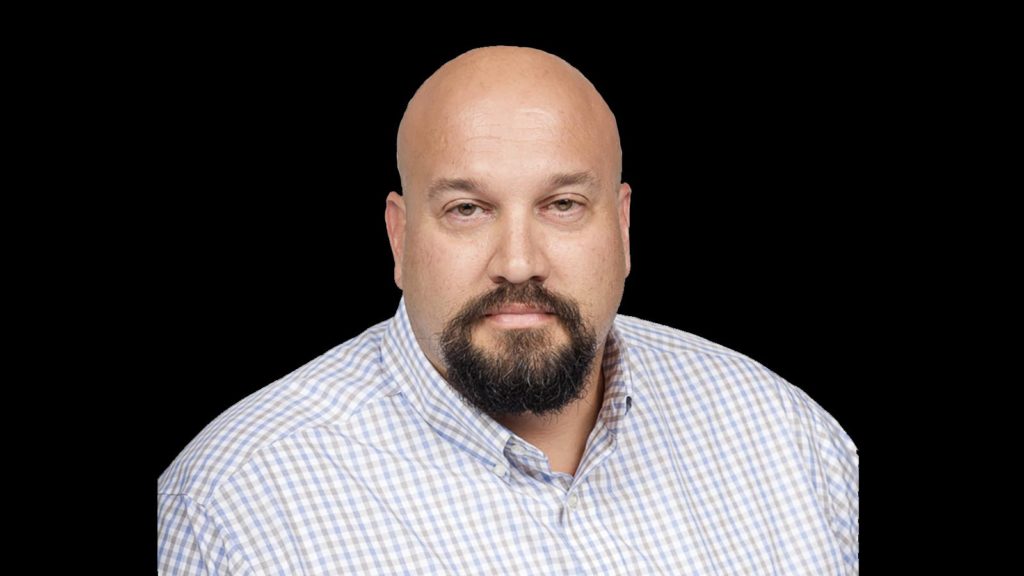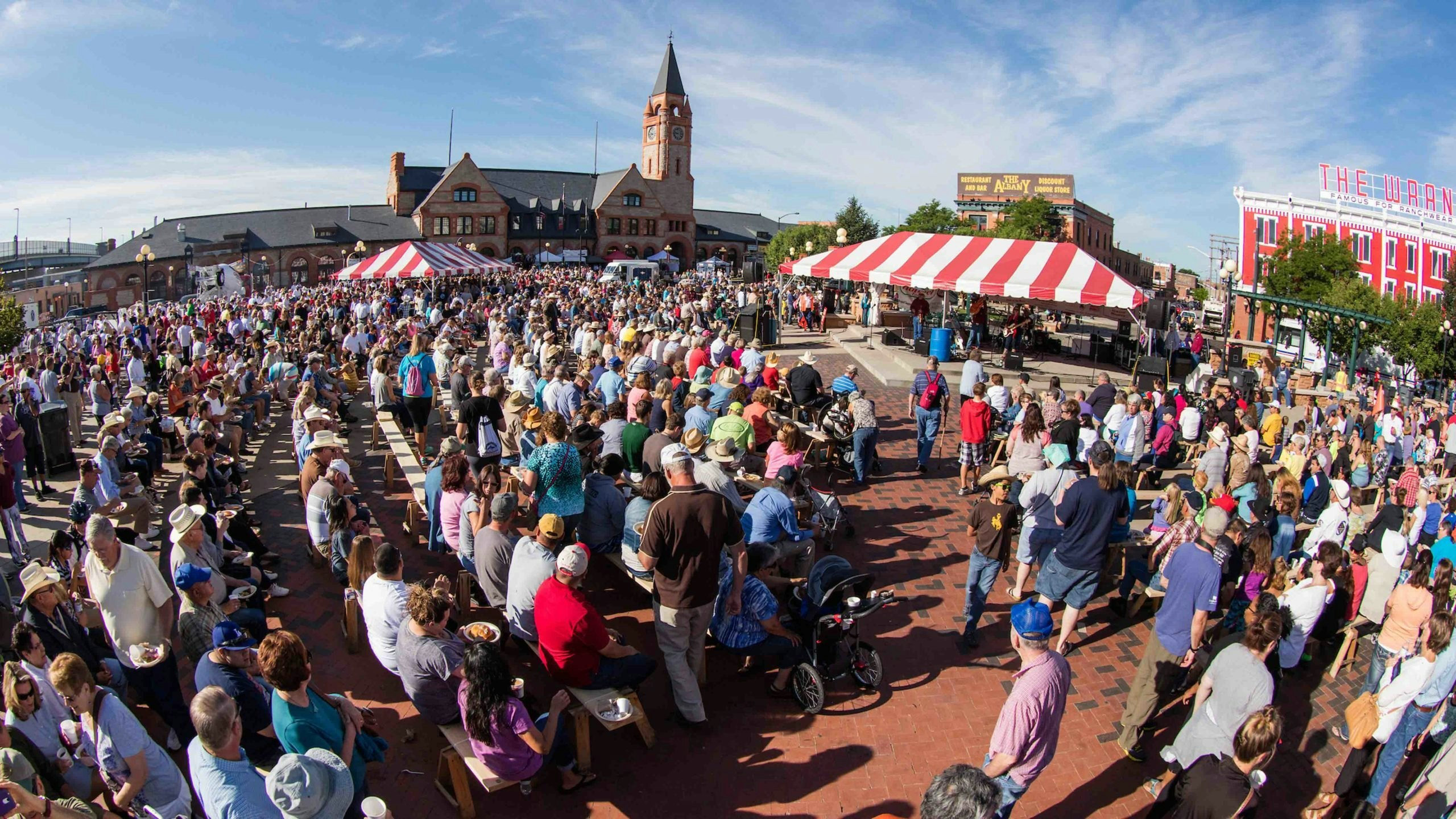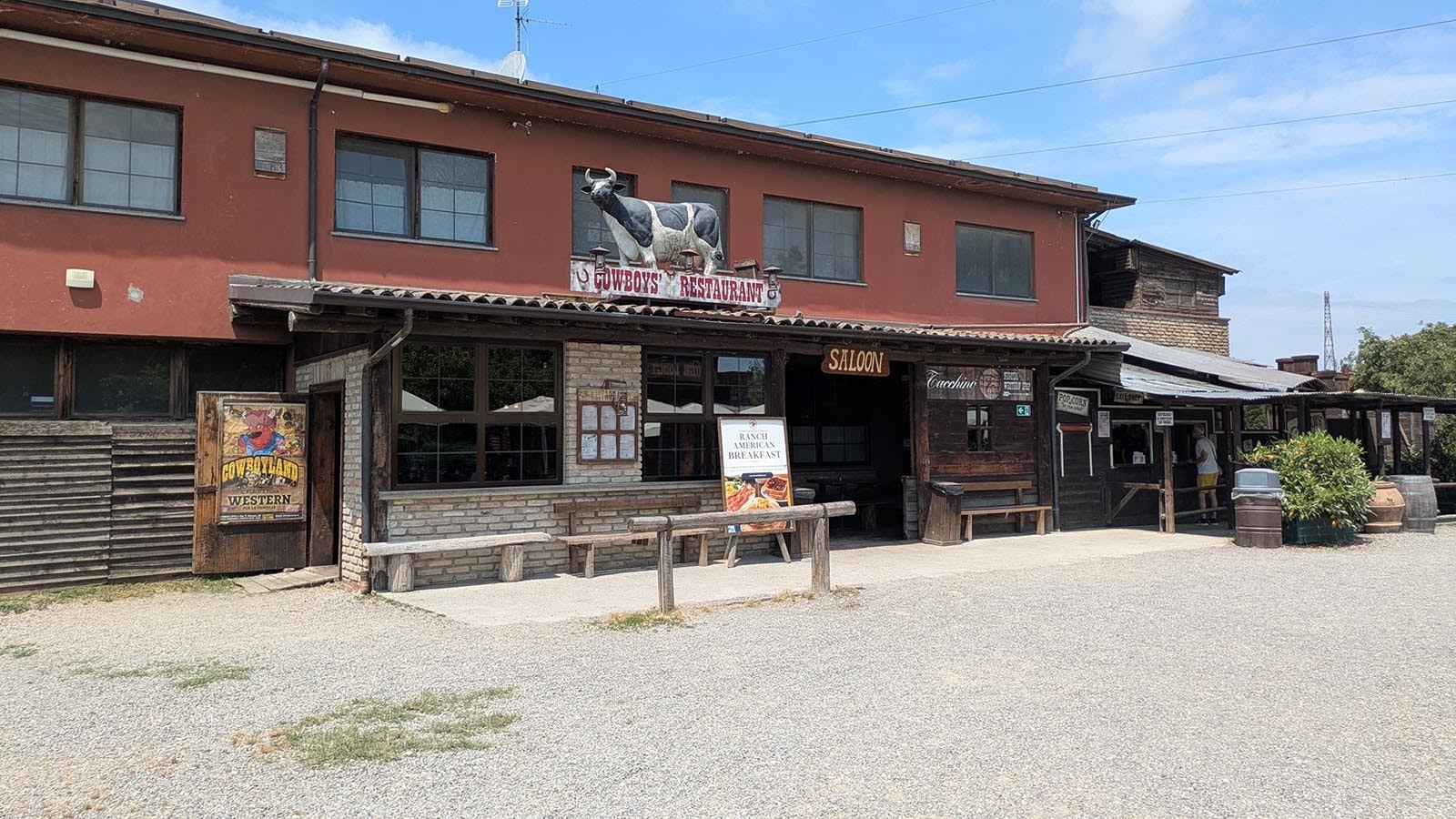By Renée Jean, Tourism and Business Reporter
Renee@cowboystatedaily.com
With summer tourism numbers down across much of Wyoming, Cheyenne set a new record for visitation despite a sluggish turnout for Cheyenne Frontier Days.
Cheyenne saw record business for its tourism industry in July, which is highlighted by Frontier Days, said Visit Cheyenne President and CEO Domenic Bravo. Even so, attendance for this year’s CFD was down given last year’s event was an anniversary, he said.
Cowboy State Daily sat down with Bravo to talk Cheyenne tourism and find out what the Visit Cheyenne and Downtown Development Authority are doing to collar more of Wyoming’s multi-million-dollar tourism market.
The interview has been lightly edited for clarity and brevity.

CSD: Talk to us about what’s behind growing tourism in Cheyenne.
Bravo: During the pandemic, we started to become event creators. In the past, we had always supported events. We’d sponsor events or provide marketing grants across our community. But we then started actually creating events, like our Hell on Wheels Rodeo series, and we created things that go on throughout the summer in partnership with our Downtown Development Authority, since we’re in an operational partnership.
We kept a lot of those activities we created during the pandemic in place. So, everything that we have that has come back online is now additive.
During the pandemic, we were only down 19% occupancy, so for 2020, and only down about 30% in revenue. So we just kept the successful pieces going while everything was recovering and, of course, that just added to everything that we are able to do to bring folks in to visit us, and still have a whole bunch of fun things for residents to do as well.
CSD: What are some of these new pandemic-inspired opportunities for fun?
Bravo: We were just thinking at the time, obviously because of the sheer size of Cheyenne Frontier Days, they’d have to cancel for 2020. So we were trying to figure out, working with our local health department and everything, what we could do within the criteria they set.
So that’s basically how we created the Hell on Wheels Rodeo series to start, was with the capacity and making sure it was outdoors and, you know, all the cleaning that had to go on and all the criteria that was set from the Health Department.
During that time we also created Cheyenne Days, Legendary Nights and we did a couple of other events, micro events during the summer that we carried forward, which other folks have now taken on themselves.
Another big thing we focused on during the pandemic is how we can work with the farms and ranchers on the eastern side of the county to really come up with some pretty impressive things.
So they have, like, be a farmer for a day over in Carpenter. You can work with a family out there to milk a goat, churn some butter, bake some bread, which is pretty awesome.
And we did some outdoor recreation stuff in partnership with our state parks and the Pine Bluff Recreation area.
We just created as many events as we could humanly create that were within that category that we were allowed to do. Those that were successful, we just carried them forward, and they’ve just been additive to everything we can do.
CSD: How big is the economic effect of tourism for Laramie County?
Bravo: It’s pretty big. I mean, I can spew off a whole bunch of different numbers, but it’s anywhere between 10 and 20% of sales taxes that can be attributed to travelers coming into the economy.
If I remember right, it’s like a $400 million economic impact.
When you look at it, like what we kind of gauge is with the sales tax alone, it saves Laramie County families about $700 a year that they don’t have to pay in taxes that we get covered by visitors.
CSD: Are these visitors mostly in-state or out-of-state?
Bravo: All of our visitors for the most part, on a pretty substantial level, are out-of-state or international visitors.
Obviously, being the capital city when we do have a (legislative) session in place, we have a lot of folks from around the state that come to us in the January, February, March timeline.
But that only makes up, the last number I remember we looked at, probably 15% of our visitors.
CSD: How does visitation here compare to other areas of the state like Teton County?
Bravo: We usually will never probably be to the level of visitation of Teton County. That one usually ranks No. 1 for visitation, but we usually battle Park County for visitation. So, Park County and us, we usually – sometimes they’re second and sometimes we’re second. It just depends on the year.
I’m hoping, I’m pretty optimistic, that we’ll come in second again this year. It will take me a little bit of effort to get the kind of visitation that Teton County gets, but that’s always a goal to work toward.
If we can develop some of our visitor assets that we’re currently working on from our master plan, that’ll definitely put added levels of visitation to what we could do in the past.
CSD: What are some of these new things you’re working on to create more tourism interest in Cheyenne?
Bravo: The 15th Street Project is a pretty amazing one that we’re hoping to get going. Hopefully, construction documents will get done here in the spring and then maybe even some of the construction could be done next summer.
Being able to bring some of the rail cars and steam locomotives to 15th Street, in partnership with our 15th Street businesses, making sure that we’re thinking about what that street looks like, I think it will just help add another layer of amazingness to the great stuff that’s already offered.
We have a lot of amazing retail and unique places, breweries and stuff. Right now, it’s still kind of in the planning phase, so there’s still a lot of time for input and modification, but I think it’ll be kind of fun. We’re trying to do some out-of-the-box things where … one of the engines could actually steam every, like, hour on the hour, kind of like an Old Faithful concept. And we’d blow the whistle three times a day.
A few of them would be museum quality, so it’d be something where you could just experience it as if it was historically restored. Others could be presented as some type of retail space or tasting room for bourbon and whiskey or ice cream.
Obviously, those would be public-private partnerships. We don’t want to compete with any of the already great businesses that exist. The goal is to enhance what already exists.
And then, of course, matching the themes, like I mentioned. I think all of those cars can be decorated for the holidays. I think it could be a pretty nice all-around attraction piece for us. We would turn 15th Street into an attraction street similar to 17th and some of the other side streets we’re currently working on to just kind of make it feel like you’re walking in a wonderland.
CSD: What else are you working on for Cheyenne tourism in the future?
Bravo: We’re also in partnership with the city and Union Pacific, we’re trying to get the Belvoir Ranch open because, again, we have amazing outdoor resources here all the way from Pine Bluffs to Curt Gowdy State Park. There’s been contemplation of parks and reservoirs and other things (at Belvoir), but our concept through our tourism master is just let’s try a phase one where we can at least get public access onto this property.
CSD: What makes Belvoir Ranch special?
Bravo: There’s a unique geological or geographical type feature known as the Big Hole. It’s like … (a) mini-Grand Canyon sounds pretty awesome, and I’m not gonna say it’s not awesome, but that’s kind of what it reminds me of when you stand on top of it and you can’t really see some parts at the bottom.
It’s this really beautiful reddish color in some places, so it’s just a cool little area, and we’re trying to get access to that from Wyoming. Right now, you can get access from the Colorado side, and there’s actually trails around there right now, but it’s a far trip.
There’s a lot of possibilities (for the site), but we figured we’d start with phase one, just getting public access to get folks the ability to experience the Big Hole and … add some outdoor recreation capacity for visitors.
That would be kind of a proof of concept, to see how folks enjoy it and what we’re doing, and then there’s always opportunities to expand.
CSD: Is hunting and fishing allowed at Belvoir?
Bravo: Right now, and again I don’t want to speak on behalf of the city, but if I’m right I think you can ask permission to hunt, but I don’t think it’s technically open to the public right now. I think it’s mostly fenced and gated.
Belvoir Ranch still has active grazing leases on it, so there’s grazing that goes on, and obviously the windmills. There are windmill roads out there, which is why we think it should be pretty easy to get access to certain areas. We can actually improve some of the windmill roads that are already out there.
But to my knowledge, I’m not exactly sure that it’s open to the public, and that’s why we’re trying to create this system that would actually make it a public access space.
The most effective and efficient way to get across would be a pedestrian bridge, which has to go over Union Pacific’s track, so we have to work with them to get approval to be able to do that. Depending on the cost and what the approvals are for that pedestrian bridge, that kind of makes everything hinge on that.
CSD: That sounds expensive.
Bravo: We have applied for some grants through outdoor recreation and some other things that will help with some components like the trail construction and trailhead construction and signage and those types of things, but we’ll have to also then figure out just funding of the bridge to make sure it all makes sense.
And so there’s some moving parts to that as well. It’s not as easy as some of the places when I used to work for state parks and we were able to get access to. It’s definitely not as easy as those, because there’s some other owners involved in getting approvals and all of that type of stuff.





